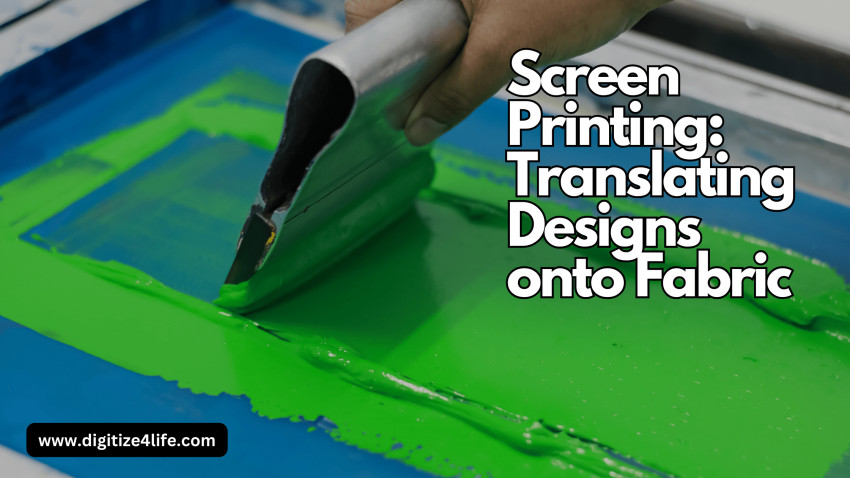
Introduction:
Within the field of textile design, show printing is a timeless method that unites creativity and practicality. Screen printing has the ability to transform plain cloth into vibrant works of art, whether it be for challenging styles or striking portraiture. This blog delves into the intriguing world of screen printing, examining its background, methods, and cutting-edge prospects.
Screen Printing’s Past
The history of screen printing extends back to ancient China, when designs were transferred onto materials using stencils. With the introduction of silk monitors in Japan at some point during the Edo period, this strategy changed over time. Display screen printing became well-known as a commercial printing method by the 20th century, and its accuracy and adaptability completely changed the textile industry.
The Method of Screen Printing
Fundamentally, screen printing is the process of applying ink to a surface via a fine mesh screen. The process starts with creating a stencil, which is sometimes done by hand-reducing designs or using photo emulsion. After that, the stencil is fastened to a display, and ink is transferred to the cloth behind it using a squeegee, which travels through the stencil’s open sections. Considering complex multicolor printing, every shade in the scheme needs its own display.
Innovative Possibilities
The ability of screen printing to create intricate designs and vivid colors is one of its main advantages. To achieve the desired effects, artists and architects might experiment with different inks, textiles, and printing techniques. For those who enjoy working with fabrics, display screen printing offers countless creative possibilities, ranging from delicate watercolor-like patterns to bold, opaque graphics.
Uses for Screen Printing
Screen printing uncovers packages in a variety of industries, including home décor, signs, and fashion and apparel. Products that benefit from the clarity and robustness of display screen-printed designs include t-shirts, tote bags, posters, and banners. Its reach throughout the textile industry is further increased by its capacity to print on both natural and synthetic textiles.
Benefits of Fabric Screen Printing
Durability: Screen-printed patterns are renowned for their robustness, with colors that hold up to many washings and use.
Precision: Sharp and exact information is ensured by the painstaking process of display printing, which works best for complex designs.
Versatility: Screen printing can accommodate a wide range of sizes and substrates, from small-scale projects to large-format prints.
Customization: Prints may be readily customized by designers with unique locations, patterns, and hues, giving each piece a unique flair.
In Summary
Screen printing is a timeless artistic medium that inspires innovation in the textile sector. Both manufacturers and artists prefer it because of its ability to transfer designs onto fabric with durability and accuracy. Screen printing adds a level of refinement and artistry to any project, whether creating ornamental or wearable art.
Discover the world of display screen printing and use this adaptable and powerful printing technique to elevate your fabric creations. Embrace the energy of hues, designs, and imagination as you bring your creative ideas to life on fabric.




